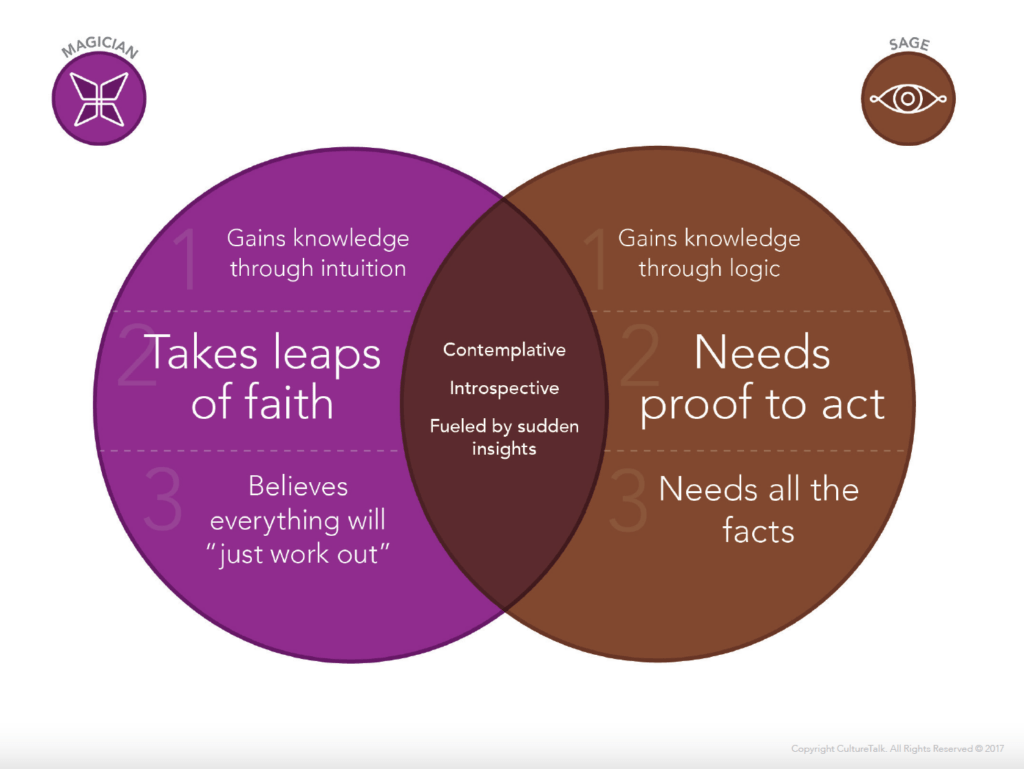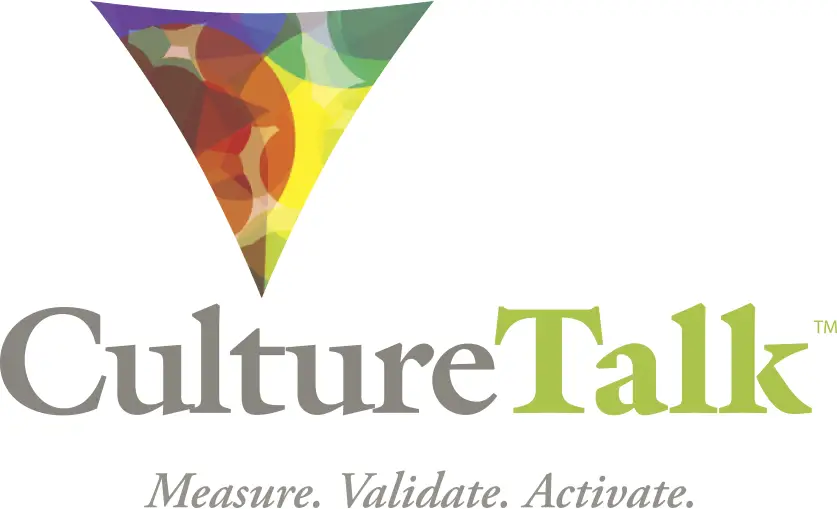Learning the Language of Teamwork
- July 22, 2022
- 5:12 pm
- Cynthia Forstmann
Deepening self-awareness is the key to elevating team cultures.
“Tough times don’t last; tough teams do,” said Robert Schuller.
It’s certainly been a tough time to lead or be part of a team.
Workplace paradigms have completely shifted over the past three years. A growing cohort of younger workers has never worked from an office. And a growing number of companies have announced they will allow employees to work from home forever.
In fields where remote is not possible, masks, mandates and short staffing have also elevated team stress.
Yet teamwork is the linchpin to organizational success.
Over the past two years, communications coaches at ARTiculate: Real&Clear have experienced an uptick in demand for coaching programs that get teams working together more efficiently.
“Leaders need help building team culture and getting their teams aligned. But team success starts with a deeper understanding of individuals. Each person much be conscious of who am I, how do I show up, and how do I become engaged or disengaged?”
| Robin Miller, PhD, Cofounder, ARTiculate Real&Clear
Adds ARTiculate coach Courtney Cauthon, “We can’t impact the team system without thinking about the individuals who are part of that system. So, we focus on the individuals first – what are their strengths, what are their challenges, and how do they connect other individuals on the team?”
ARTiculate is certified to bring CultureTalk’s assessments and Archetype-storytelling framework into their coaching engagements. We caught up with Robin and Courtney to hear how they design team experiences and how the work is positively impacting team culture.
A Fluid Framework that Informs
When teams bring ARTiculate in, everyone takes a CultureTalk for Individuals assessment, a measurement of storylines that are part of their life experiences. Each person then meets one-on-one with a coach to debrief their scores and validate their top patterns.
When they introduce the 12 Archetypes of CultureTalk, ARTiculate is careful to frame the conversation.
“We underscore that everyone has access to all 12 patterns,” says Courtney, but they have a few primary Archetypes. As they become aware of the patterns, they begin to see the underlying motivation or driver for each. For example, they understand that each Archetype has nuances for communicating and connecting with others.”
| Courtney Cauthon, ARTiculate Real&Clear
Heroes rise to challenges and can inspire with their words. Explorers are focused on new experiences and expose others to opportunities. Rulers seek stability and order, and their communication provides structure.
“We stress the fluidity of the patterns,” adds Robin, “we want people to see how they unconsciously shift from one Archetype to another in a single conversation and how they can also learn to do it with intention.”
ARTiculate coaches also remind teams that knowing each other’s Archetypes serves only to inform their interactions, not to define people.
“Some personality assessments get thrown in a drawer and people forget about them,” says Robin, “Or, if the results do come up again, they are used to define or label someone. This kind of experience leads to people holding back for fear of being branded.”
| Robin Miller, PhD, ARTiculate Real&Clear
“When I facilitate a team training, I coach the team to listen to how others are speaking, what words they are using, what is their body language. The team starts learning more about each other as the conversation unfolds.”
“The Archetypes give people a license to get curious,” says Robin, “You’ll have a different perspective of your teammate as you learn the desired outcome that motivates each pattern and understand how the different archetypal energy affects you.”
Self-Awareness = Team Success
As team members develop aptitude with Archetypes, they learn to apply the framework to improve interactions and outcomes. They are coached how to address potential conflicts real-time through the 4-Step PASS Process.
It works like this.
1: Pause
As a meeting is unfolding and someone feels triggered or overlooked, they can take a pause, the pause may be in their internal dialogue.
It helps to get focused on your breathing. Exhale and inhale!
2: Ask
The team member needs to ask themselves: Why am I having this response right now? Who am I in this situation, and who am I on this team?
Understanding one’s own Archetypes and the patterns of others on the team provides a common language. They can identify which pattern they are in when they are excited or upset, and more easily identify the pattern that’s driving each of their teammates.
3: Shift
Instead of experiencing someone else as offensive or non-inclusive and using their patterns against them, an individual sees how their reactions are informed by their own Archetypes. In this moment, they let go of judgement and labeling and shift into the recognition of what’s missing, what’s not working for them, and what they need.
At times, they may also need to shift into a different one of their Archetypes.
As someone makes this shift internally, the energy of the conversation also shifts. They are ready to communicate in a way they can be heard and will move the team forward.
4: Speak
Now the team member can reenter the conversation – ask clarifying questions and provide their perspective on what they heard. Here the language of Archetypes is particularly helpful. They can state which pattern they are in, and what that pattern needs to have addressed.
For example – “My Caregiver is concerned that not everyone’s needs are met,” or “My Explorer feels like we need to be open to other opportunities” or “My preference as a Revolutionary is to stop doing the things that we know haven’t worked before.”
“With the PASS process, we learn to assume best intention,” says Courtney, “We acknowledge that as individuals on a team we all want connection and relationship. We all want to make decisions based on what's best for the company.”
| Courtney Cauthon, ARTiculate Real&Clear
Over time, the PASS process itself creates a team culture where it is okay to speak up and to trust that everyone’s going to pause long enough to listen and care enough to respect what other teammates need.
PASS in Action
Robin and Courtney provide a great example of how the PASS process works on their own team.
Two team members, Courtney and cofounder Hilary Blair, have high Magician, an Archetype pattern which is visionary and prone to making bold leaps. Robin loves big vision, but her Sage Archetype needs something different.

Without PASS, Courtney and Hilary would put an idea on the table that felt out of reach to Robin and her reactive response was ‘no’ until further proven, a response that will irritate a Magician.
With PASS, they have learned to navigate the Magician-Sage interactions. As Magician visions are excitedly shared, Robin will initiate the PASS.
1: Pause
“They can vision something, and boom, they are already there, says Robin, “They may have already had conversations with several people, but I am feeling triggered.”
2: Ask
“I see that in that triggered moment that my Sage pattern has kicked in. I know the team counts on me to ask the questions that need answering.”
3: Shift
“While I want to say ‘no’ because the vision lacks facts and process, I take that moment to shift my energy so that I don’t just shut down the conversation. I want to respond in a way that moves us forward.”
4: Speak
Instead, Robin may say something like, “Your Magician just went from A to Z and decided, but my Sage needs the facts. Because if we are going to do this, things need to be in place. Let’s talk about how we are going to get there.”
Archetypes in Conflict: A Deeper Dive
The PASS process allows teams to identify, address and deescalate potential conflicts in the moment. The process can be deepened as individuals learn to pinpoint ‘how their communications land’ on people with different patterns.
ARTiculate’s coaches are noticing that conflicts between Archetypes fall into three categories. To illustrate the difference, let’s go back to the Magician-Sage tension described earlier that is part of the team dynamic at ARTiculate.
1: A Strength-to-Strength Conflict
When the Sage asks for more details and facts about a Magician’s bold leap – both patterns are operating from a core strength. If one person finds the other pattern triggering, often the conflict can be resolved by acknowledging the value of both points of view.
2: A Strength-to-Shadow Conflict
What if instead, the Magicians weren’t presenting a clear vision, but were misleading the team towards an idea that was impossible to achieve? The Sage would still be triggered. Here, asking the tough questions would be acting from Sage strength in reaction to Magician shadow.
3: A Shadow-to-Shadow Conflict
The same conflict above could become a shadow-to-shadow conflict if the Magician devalued traditional thinkers, and the Sage put on airs of superiority. This will essentially shut down communications.
“When I find myself reacting poorly to another person’s responses, it is easy for me to assume they are acting from their shadow side,” says Courtney, “But that isn’t always the case. Sometimes, it’s me in the shadow of one of my Archetypes. Knowing the type of conflict deepens self-awareness and adds another level of clarity to interactions.”
| Courtney Cauthon, ARTiculate Real&Clear
Teamwork Takes All Types
As Robin gets to the know the individuals on a team, she also coaches people on specific ways they can activate the strengths of their Archetypes to support the team. She suggests roles that can naturally support other team members.
She is also modeling the way a leader can tap into individual motivations to engage a team.
“When I enter a group dynamic,” says Robin, “I am looking for ways to champion ideas, support conversations and make sure that every point of view is acknowledged, even if it’s not something we can run with now. I am empowering everyone to understand their role in the group.”
“I also ask the team how they are going to keep the 12 Archetypes alive and present in their interactions so that the patterns can continue to inform, shift, and elevate your interactions and your team experiences?”
| Courtney Cauthon, ARTiculate Real&Clear
Robin then speaks to individuals about the strengths they bring to the team and to demonstrate the importance of vantage points:
- Rulers, what’s the process going to be?
- Explorers, what new ideas are possible?
- Revolutionaries, what’s broken?
- Creators, is there a better design?
- Jesters, are we having fun?
- And so on . . .
Robin asks, “If we don’t allow people to live into their strengths, why bother having them on the team? If we allow all these different perspectives into the room, how much more potential is there to succeed?”
Embracing Difference
As leaders and teams learn to recognize different Archetype perspectives, they begin to embrace that difference.
Robin was remembering a Revolutionary on a team who had been labeled as the ‘problem’ because she asked too many questions and was skeptical about proposed ideas. The team tended to shut her down… until they learned the value of Revolutionary energy.
“They realized the ‘problem’ came from the shadows of the team’s culture, not the Revolutionary. That’s when everything shifted,” says Robin, “Now they welcome the questions. They see the questions as a gift that keeps them from falling off a cliff. It can serve their success; it can move them forward. “It shifted how they experienced her, they became more open and welcoming of that diverse point of view.”
| Robin Miller, ARTiculate Real&Clear
Building Team Culture
Archetypes provide teams a language for discussing intangible, but powerful ideas like intention, motivation, and values that are critical to individual engagement and shared success.
“We see teams having conversations in a new way,” says Courtney, “using the Archetypes to describe what’s working, what’s not working, and what might be missing. They are aware that the patterns are not static and that the dynamic is changing based on information they are getting from others and how they are responding.”
“And there’s a buffer,” adds Robin, “we are talking about patterns of behavior, rather than making it about a person. The framework allows people to discern how they are feeling.”
How does this deepening self-awareness elevate teams?
“It’s almost counterintuitive. You would think by focusing on individuals, things would become siloed, but the individual development is opening them up so they can build stronger connections with others,” says Robin.
“This helps with engagement. It helps with brainstorming. It helps with innovation. It helps with retention. It helps with conflict and difficult conversations.”
“What we're finding on teams is that CultureTalk provides the language for people to talk about these things. And the team’s culture is strengthened as new conversations emerge from being able to use this language.”
| Robin Miller, ARTiculate Real&Clear
Activate Archetypes with your Team
Want to bring the ARTiculate team into your workplace? Check out the ARTiculate Real&Clear website or reach out to Robin Miller to learn more about the executive and team coaching programs!







